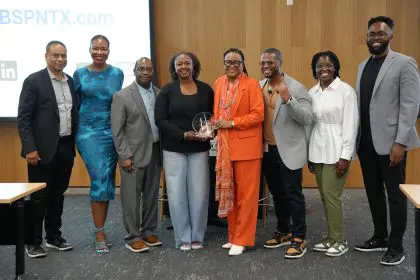The days of a single lifelong career are increasingly rare. Today’s professionals navigate multiple transitions throughout their working lives, searching for greater purpose, balance and fulfillment. Recent studies indicate that the average person will hold 12 different jobs during their lifetime, with many making complete career pivots at least once. As workplace dynamics evolve and priorities shift, understanding how to identify and pursue your true calling becomes essential for long-term career satisfaction.
Understanding the modern career landscape
Career transitions have become normalized in today’s workforce. Data from the Bureau of Labor Statistics reveals that professionals born between 1957 and 1964 held an average of 12.4 jobs between ages 18 and 54. For younger generations, this number is projected to be even higher.
The pandemic accelerated this trend significantly. Research from McKinsey & Company shows that 65% of employees reported the pandemic caused them to reflect on their purpose in life, with nearly half reconsidering the kind of work they do. This widespread reassessment has been dubbed “The Great Reflection” by workforce analysts.
Economic necessity and technological disruption drive some career changes, but research increasingly shows that the pursuit of meaning represents a primary motivator. Studies published in the Journal of Vocational Behavior indicate that alignment between personal values and career choice correlates strongly with job satisfaction, productivity and overall wellbeing.
5 strategies to discover your authentic career path
Conduct a comprehensive skills inventory The first breakthrough in career transitions begins with identifying transferable skills. Research from LinkedIn’s Economic Graph team shows that 73% of successful career changers leverage existing skills in new contexts rather than starting from zero.
Begin by cataloging both technical skills (data analysis, project management, writing) and soft skills (communication, problem-solving, leadership). Then evaluate which of these skills energize you when using them. According to organizational psychologists, the skills that create a state of flow—where time passes quickly and engagement is high—often point toward authentic career directions.
Career assessment tools, including the Strong Interest Inventory and CliftonStrengths, provide structured frameworks for this analysis. When combined with personal reflection, these assessments help identify patterns that may not be immediately obvious.
Map your values to potential paths Career satisfaction depends heavily on alignment between personal values and organizational culture. Research from the Society for Human Resource Management indicates that value misalignment represents the primary reason professionals leave otherwise well-compensated positions.
The breakthrough approach involves explicitly identifying core values and systematically evaluating potential career paths against them. If autonomy ranks highly, entrepreneurial roles or positions with significant independence may prove more satisfying than highly structured environments, regardless of compensation.
Workplace psychologists recommend creating a values hierarchy by ranking principles like creativity, security, recognition, service, or balance. This hierarchy becomes a powerful filter for evaluating opportunities and narrowing options.
Implement strategic experimentation Theoretical career exploration often proves insufficient. Harvard Business School research on career transitions highlights the importance of active experimentation before making major changes. This approach, sometimes called “prototyping,” involves testing potential paths through low-risk methods.
Effective experimentation includes informational interviews, job shadowing, freelance projects, volunteering, and part-time work. Each provides practical exposure without full commitment. According to transition specialists, conducting 8-10 meaningful experiments provides sufficient data for informed decisions.
This strategy prevents costly mistakes. Studies show that approximately 23% of career changers return to previous fields within 12 months when transitions are based solely on theoretical interest rather than practical experience.
Develop a transition narrative Career changers who successfully pivot develop compelling narratives explaining their transitions. Research on career development center demonstrates that professionals who articulate clear, authentic stories about their career evolution receive more offers than those who present disjointed employment histories.
The breakthrough occurs when transitions are framed not as departures but as evolutions. Effective narratives highlight continuity through transferable skills while emphasizing how the change represents an authentic progression rather than an abrupt shift.
This approach proves particularly valuable when transitioning between seemingly unrelated fields. Resume gaps become strategic pauses, and diverse experiences become evidence of adaptability rather than inconsistency.
Build transition-specific networks Network analysis research reveals that 85% of job opportunities come through network connections, with second and third-degree connections proving most valuable during career transitions.
The breakthrough strategy involves cultivating relationships specifically within target fields rather than relying on existing networks. Professional associations, industry conferences, online communities, and alumni groups provide structured entry points to these new connections.
Studies show that successful career changers typically develop at least 10-15 meaningful relationships within their target field before making transitions. These connections provide insider knowledge, mentoring, and access to opportunities not publicly advertised.
Navigating common transition challenges
Career transitions invariably involve temporary discomfort. Psychologists specializing in career development identify several common challenges, including identity shifts, skill gaps, financial concerns, and imposter syndrome.
Research suggests that developing psychological resilience represents the most significant predictor of successful transitions. Practices including maintaining perspective, building support systems, and cultivating self-compassion help navigate the inevitable difficulties.
Financial planning emerges as another critical component. Career transition experts recommend creating a financial runway covering 6-12 months of expenses before making major changes, particularly when transitions involve education or periods of reduced income.
The future of career development
As workforce trends continue evolving, career development increasingly resembles portfolio management rather than ladder climbing. Research on Longevity suggests that traditional retirement may become obsolete, replaced by multiple cycles of work, learning, and sabbaticals throughout extended working lives.
This shift necessitates ongoing self-assessment and periodic career recalibration. The professionals most likely to thrive maintain continuous learning practices, regularly reassess alignment between work and values, and view career development as a lifelong process rather than a one-time decision.
Finding your true calling increasingly means creating it deliberately through strategic exploration, experimentation, and evolution. The breakthrough realization for many career changers is that authentic work emerges not from a single moment of discovery but through an intentional, iterative process of alignment between internal values and external opportunities.















